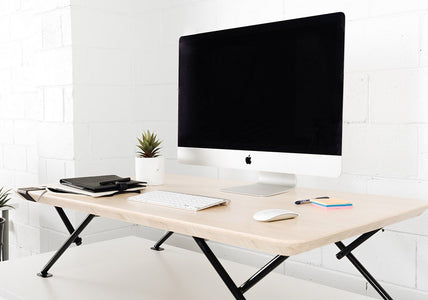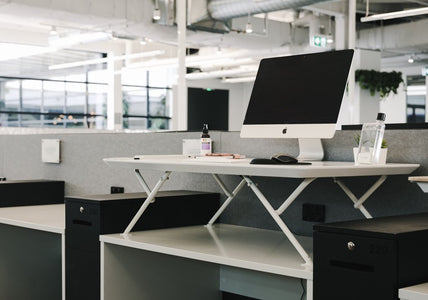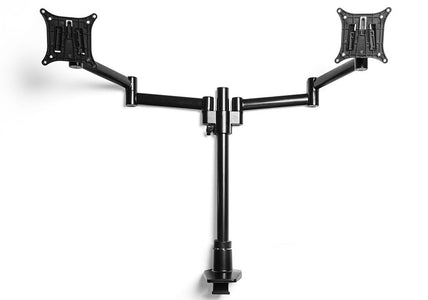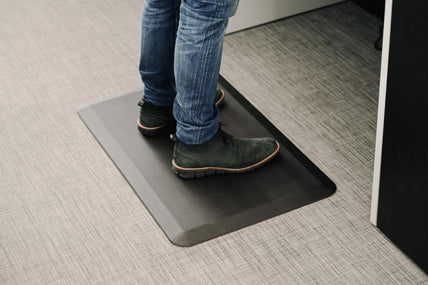How to Properly Use a Standing Desk: 3 Common Mistakes to Avoid
By Nadia Angelini on March 02, 2020Today, many people are starting to realise the importance of ergonomics for both home and office workstations. With that, various ergonomic tools and equipment have been used to boost productivity and to ensure that their bodies don't run into serious health issues.
Whether it be due to lack of research or just inexperience, however, some people don't use these ergonomic tools correctly, hampering their productivity in the process. One of these tools is the standing desk. A standing desk allows a worker to do their job standing or sitting down. Unfortunately, some people make a few mistakes when it comes to utilising a standing desk.
Here are three common mistakes you should avoid when using a standing desk:
- Not Adjusting the Standing Desk at the Right Height
A common mistake people make is that they don't set up their desks to be at the correct height for sitting and standing.
When you're sitting or standing, make sure that when your arms are placed on the desk, your elbows are angled at 90 degrees. Your desktop monitor should also be slightly below your eye level, approximately one-fourth the distance from the top bezel of the screen. That way, when you work, whether standing or sitting, you won't end up with any discomfort to the arms, necks, and even eyes.
- Standing for Far Too Long
Just because you have a standing desk, doesn't mean you should be standing all day. Of course, that doesn't mean you should be sitting all day either. While standing might not pose as much of a health risk as sitting, it will still cause you to feel fatigued and experience leg pain after prolonged standing.
The best way to maintain your health in the office or at home is to divide time between sitting and standing. We recommend that you stand for approximately two to four hours every day using the desk. If you find that your feet are starting to ache, you can add a cushion on the floor, such as a mat, or wear comfortable shoes. While these will ensure that your feet stay nice and comfortable, it will also promote movement when standing.
- Not Standing or Sitting in a Good Posture
Posture is always essential, whether you're sitting or standing. Poor posture will only bring discomfort, as well as put your body at risk of other health issues, such as back pain.
That said, always practice good posture while at work. Set reminders to yourself if you need to and learn what it takes to build good posture. You'll start to see the benefits of a good posture immediately. Not only will it make sure your body is performing optimally, but that you'll look a lot healthier and much better too!
Bottom Line
As important as it is to have an ergonomic workstation for use, it is also crucial to avoid committing the mistakes we've mentioned above when using a standing desk. By achieving the right posture, setting the desk at the right height, and dividing time between sitting and standing, you're making the most out of standing desks. As a result, you can boost your productivity and overall satisfaction at work.
If you’re looking for a high-quality standing desk, get in touch with us today to see how we can help.










